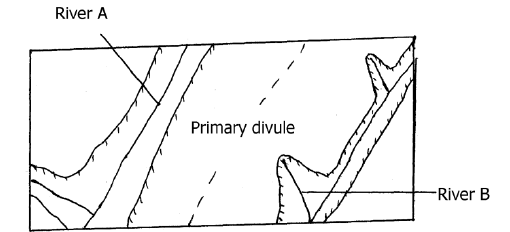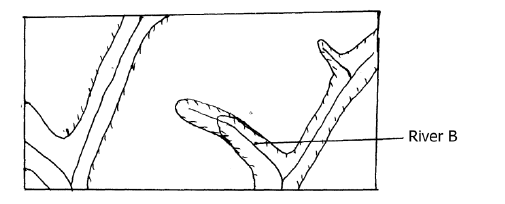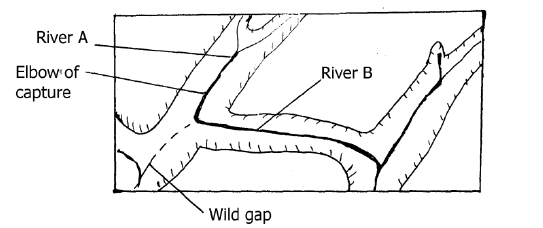The process of river capture
The pirate river erodes headward more vigorous than the misfit. Its valley therefore becomes wider, deeper and longer as it cuts back of its own valley. Eventually the pirate river captures the headward waters of the adjacent river. The river dries to form a wind gap. The misfit continues flowing in its former valley at lower points but since the headward waters are diverted into the pirate river, the misfit becomes a smaller river flowing in a larger valley. The pirate river floods and its valley becomes wider, deeper and longer since it has increased its upper source.
OR
- This happens when rivers are sharing a watershed.
- The actively eroding river gradually cuts back its slope head until it encroaches upon the divide
or water shed of the other river.
- Eventually the power reaches the source of the weaker river and diverts its water into its
channel.
- River rapture may also occur where there are two adjacent rivers.
- One of the rivers has more erosive power than the other.
- The more powerful river erodes away the ridge that separates the two by head ward erosion.
- Eventually it encroaches into the valley of the weaker river diverting its waters into its valleys.
OR
- Occurs where two rivers flow adjacent ?to each other.The pirale river flows at a lower level.
- The pirate river erodes its valley headwards towards the valley of the weaker river capturing headwaters of the weaker river.
- Having lost its water, the weaker river reduces in size forming a misfit.
-River A is weaker than River B.River B is flowing at a lower level and is eroding more vigorously than River A

b) River B has extended its valley backwards by headward erosion.The primary divide is reduced to a secondary divide. The valley of River B is approaching that of River A and is at lower level

c) River B has cut back into the valley of River A. The headwaters of Rivers A diverts into the system of River B. River A is therefore captured by River B.

gideon1 answered the question on
September 29, 2017 at 17:50